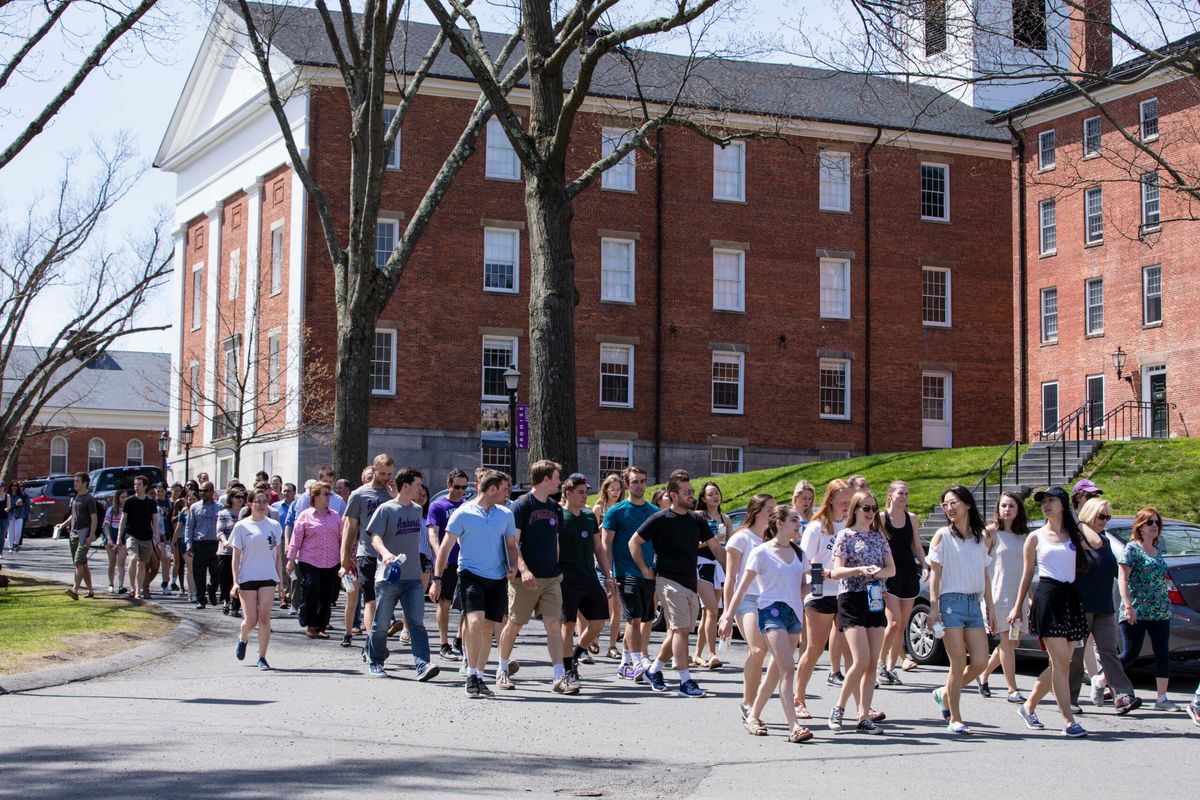Funds From Mental Health Walk Left Unused

The Walk for Mental Health that took place last year on May 2 raised $25,000, intended for allocation to events promoting mental wellbeing. Almost a year after the event, the money has still not been used.
The Walk for Mental Health was created by the student group Active Minds, students from the Presidential Task Force on Diversity and Inclusion and the Association of Amherst Students. Sarah Wishloff ’19, chair of Active Minds last year, said that the idea for the walk originated in an email from President Biddy Martin in the wake of Christopher Collins’ death. Christopher Collins ’20 died by suicide in March 2018.
The money raised from the Walk for Mental Health was intended for specific projects on campus that focused on mental wellbeing. The college donated a base of $15,000 upfront, Chief Student Affairs Officer Hikaru Kozuma wrote in an email interview. For every student that swiped their keycard at the walk, the college donated an additional $15.
According to Kozuma, nearly 400 students, faculty and staff attended the walk.
The amount of funds raised by the event totalled $25,000. “It was understood from the beginning that the funds from the walk would be used to support mental health efforts on campus rather than to donate to an outside organization,” wrote Kozuma. “The community would play a role in what those efforts would be.”
As of Feb. 27, the funds have not been used in any way. At a fall 2018 meeting that Active Minds held with Student Affairs, a student body survey was proposed to determine how the funds should be used, said Wishloff. “It was something along the lines of ‘there would be a fund established, and students could apply to use between $50 to $500 to put on events related to mental health,’” she said. It was unclear whether any concrete decisions were made.
The Student contacted Associate Director of Mental Health Promotion Jessica Gifford for comment, but Gifford declined to comment and referred to Kozuma.
When Active Minds first approached the college about hosting the walk, the student group proposed a list of changes that the school could make to support mental well-being on campus, Wishloff said.
“We knew from the start that we wanted concrete changes to result from the money raised,” she said.
Some of those proposals include increased faculty training to help students with mental health problems and additional resources such as increased staff member for the Counseling Center to support its growing demand.
“We wanted more counselors of color and counselors trained to address the LGBTQ population. Some students told us they felt like their issues were not understood by the counselors,” Wishloff added.
“Our initial problem with this was that students have the burden of mental health challenges, so the solution should come from the school,” Wishloff said. She mentioned that though the money raised by the Walk for Mental Health was not enough to fund new staff at the Counseling Center, it could support alleviating mental health issues in some way.
Christina Lee ’20, who attended the walk, said that many students attended the walk to show support for those who are suffering from mental health problems.
“The first-year quad was completely covered with people. At the end of the walk, the Counseling Center and the wellness team took suggestions as to how to better improve their services,” she said. “That the college is willing to give so much money for a cause really shows that it is here to support the student body.”
“It wouldn’t be a bad idea to make the Walk for Mental Health a tradition at the college. I think expanding the Counseling Center staff and resources could be a good start. I think people would be upset when they find out that the money raised from the event has not been productively used yet — it’s just been sitting in the hands of the school,” Lee added.





Comments ()